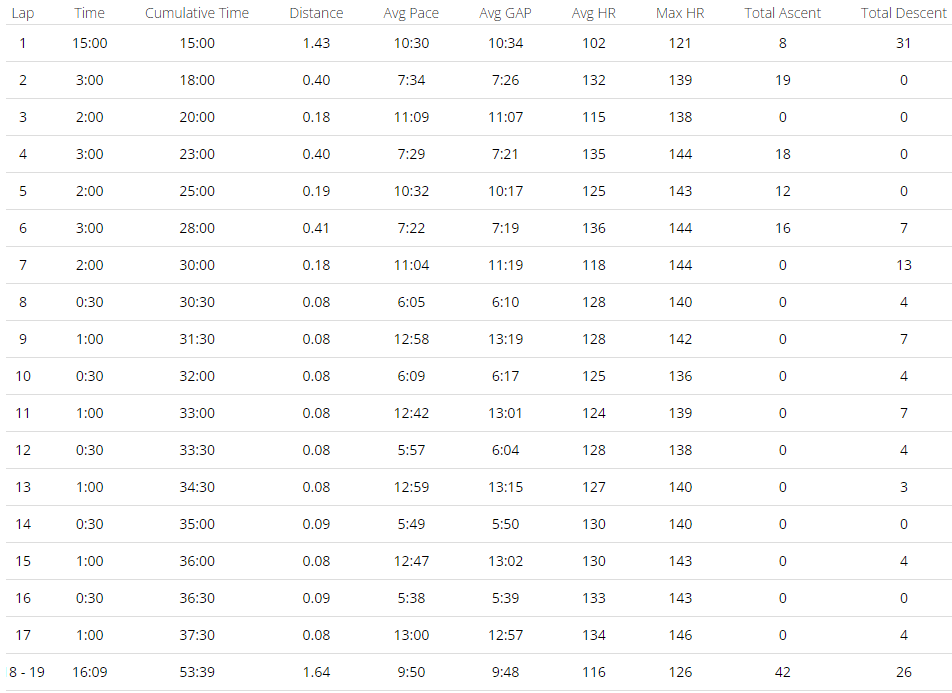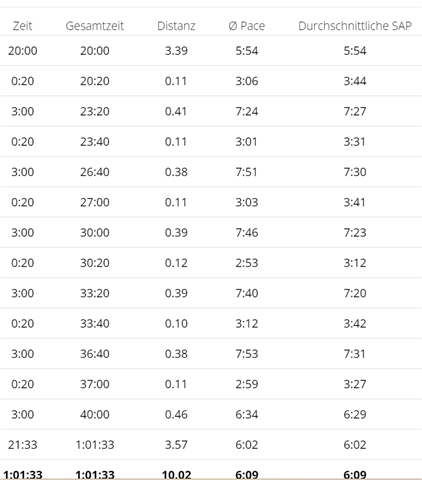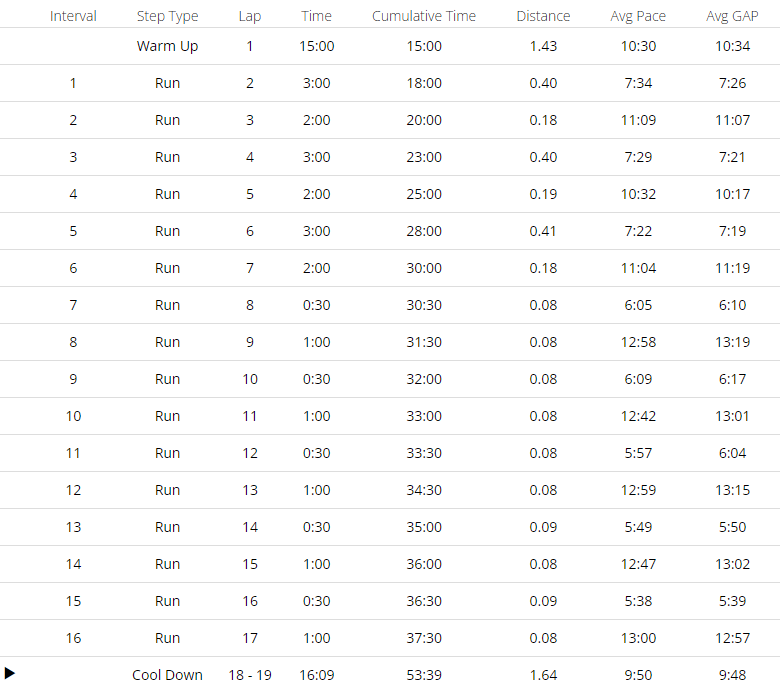On a run with short intervals, I've noticed that the average GAP is slower than expected.
In the five 30 s intervals shown here:
- three have (nett) ascent, but two of those have slower GAPs, and it's only the largest ascent that shows a faster GAP, as should be expected for all three;
- one has no ascent or descent, but has a slower GAP; and
- one has nett descent, and has a slower GAP, as should be expected.
| Time | Distance | Avg Pace | Avg GAP | Total Ascent | Total Descent |
| 00:30 | 0.12 | 04:06 | 04:17 | 1 | 0 |
| 00:30 | 0.11 | 04:27 | 04:32 | 3 | 0 |
| 00:30 | 0.12 | 04:01 | 04:36 | 0 | 2 |
| 00:30 | 0.12 | 04:01 | 04:16 | 0 | 0 |
| 00:30 | 0.11 | 04:44 | 04:26 | 5 | 0 |
Looking at several other recent short interval runs, I see the same pattern...






